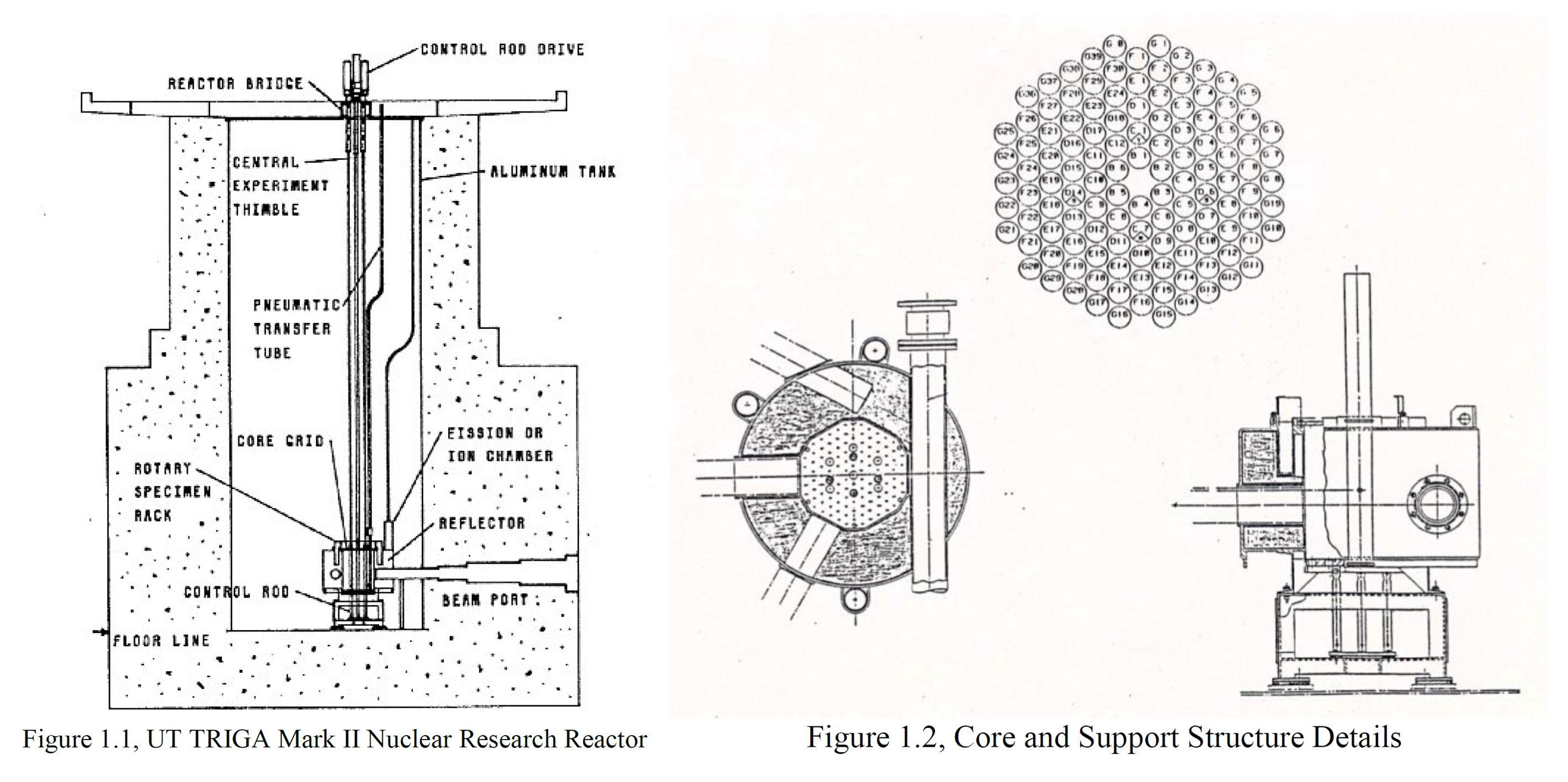UT-Austin operates a 1.1 MW TRIGA II research reactor (with pulsing to a maximum permitted
reactivity addition of 2.2% Δk/k) at the J.J. Pickle Research Campus (PRC), approximately 10
miles north of the main campus in Austin, Texas. The reactor is located in the Nuclear Engineering
Teaching Laboratory (NETL), a building that
houses an organized research unit of the UT-Austin Walker Department of Mechanical
Engineering in the Cockrell School of Engineering. The NETL serves a multipurpose role, with
the primary function as a “user facility” for faculty, staff, and students from the College of
Engineering. The facility supports the Nuclear and Radiation Engineering Program of the
Department of Mechanical Engineering for laboratory exercises in UT courses, undergraduate
research, and graduate research. The NETL supports educational programs for other organizations
and institutions including Historically Black College and Universities as well as other Minority
Serving Institutions. The facility supports development and application of nuclear methods for
researchers from other universities, industry, and government organizations. The NETL provides
nuclear analytic services to researchers, industry, and other research and industrial laboratories for
testing and evaluation of materials. The NETL provides public education through tours and
demonstrations.
NETL Building: The NETL building is a 1950 sq meter (21,000 sq ft), facility with laboratory
and office spaces.
Building areas consist of two primary laboratories of 330 sq m (3600 sq ft) and eighty sq m (900
sq ft), eight support laboratories (217 sq m, 2340 sq ft), and six supplemental areas (130 sq m,
1430 sq ft). Conference and office space are allocated to twelve rooms totaling 244 sq m (2570 sq
ft). One of the primary laboratories contains the TRIGA reactor pool, biological shield structure,
and neutron beam experiment area. A second primary laboratory has walls 1.3 meter (4.25 ft) thick
for use as a general-purpose radiation experiment facility. Other areas of the building include
shops, instrument & measurement laboratories, and material handling facilities. An Annex was
installed adjacent to the NETL building in 2005, a 24- by 60-foot modular building. The annex
provides classroom space and offices for graduate students working at the NETL.
Reactor: The largest room in the NETL building is a vault-type enclosure that serves as a
confinement
volume for the UT TRIGA nuclear research reactor. The TRIGA Mark II reactor is a versatile and
inherently safe research reactor conceived and developed by General Atomics to meet education
and research requirements. The UT-TRIGA reactor provides sufficient power and neutron flux for
comprehensive and productive work in many fields including physics, chemistry, engineering,
medicine, and material science.
The NETL UT-TRIGA reactor is an above-ground, fixed-core research reactor. The reactor core
is located at the bottom of an 8.2-meter-deep water-filled tank surrounded by a concrete shield
structure. The water serves as a coolant, neutron moderator, and radiation shield. The
reactor core is surrounded by a graphite cylinder acting as a neutron reflector.
The reactor core is an assembly of cylindrical fuel elements surrounded by an annular graphite
neutron reflector. Fuel elements are positioned by an upper and lower grid plate, with penetrations
of various sizes in the upper grid plate to allow insertion of experiments. Each fuel element consists
of a fueled region with graphite sections at top and bottom, contained in a thin-walled stainless
steel tube. The fuel region is a metallic alloy of low-enriched uranium in a zirconium hydride
(UZrH) matrix. Physical properties of the TRIGA fuel provide an inherently safe operation. Rapid
power transients to high powers are automatically suppressed without using mechanical control.
The reactor quickly and automatically returns to normal power levels. Pulse operation, a normal
mode, is a practical demonstration of this inherent safety feature.
The reflector is a graphite cylinder in an aluminum-canister. A ten inch well in the upper surface
of the reflector accommodates an irradiation facility, the rotary specimen rack (RSR), and
horizontal penetrations through the side of the reflector allow extraction of neutron beams. In 2000
the canister was flooded to limit deformation stemming from material failure in welding joints. In
2004, the reflector was replaced with some modifications, including a modification to the upper
grid plate for more flexible experiment facilities.
The UT-TRIGA research reactor can operate continuously at steady-state powers up to 1.1 MW,
or in the pulsing mode with maximum power levels in the GW range for periods of up to ten milliseconds.
The pulsing mode is particularly useful in the study of reactor kinetics and control. The
power level of the UT-TRIGA is controlled by a regulating rod, two shim rods, and a transient rod.
The control rods are fabricated with integral extensions containing fuel (regulating and shim rods)
or air (transient rod) that extend through the lower grid plate for full span of rod motion. The
regulating and shim rods are fabricated from boron-carbide contained in stainless steel tubes. The
transient rod is a solid cylinder of boron-carbide clad in aluminum. Removal of the rods from the
core allows the rate of neutron induced fission (power) in the uranium-zirconium-hydride (UZrH)
fuel to increase. The regulating rod can be operated by an automatic control rod that adjusts the
rod position to maintain an operator-selected reactor power level. The shim rods provide coarse control of
reactor power. The transient rod can be operated by pneumatic pressure to permit rapid
changes in control rod position. The transient rod moves within a perforated aluminum guide tube.
The UT-TRIGA research reactor rod control system uses a compact microprocessor-driven control
system. The digital control system provides a unique facility for performing reactor physics
experiments as well as reactor operator training. This advanced system provides for flexible and
efficient operation with precise power level and flux control, and permanent retention of operating
data.

